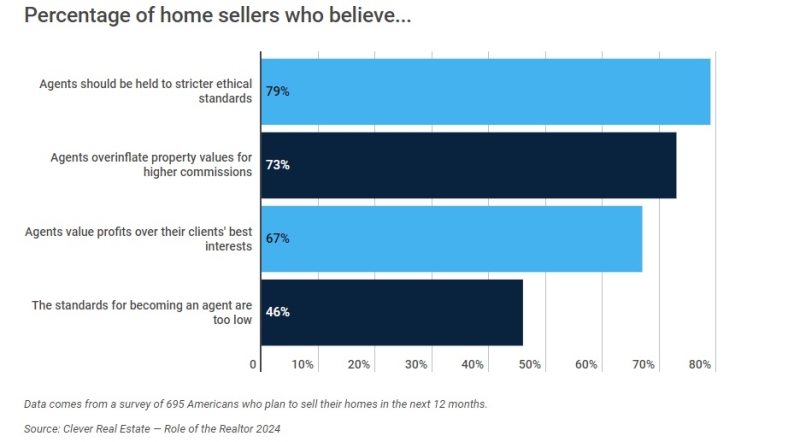Advertisement
Steering Consumers to Expensive Mortgage Loans

The Consumer Financial Protection Bureau (CFPB) announced that it had filed a complaint yesterday in a federal district court against Utah-based Castle & Cooke Mortgage LLC (C & C) and two of its officers for illegally giving bonuses to loan officers who steered consumers into mortgages with higher interest rates. C & C is not some mom and pop mortgage company: In 2012 it originated in the range of $1.3 billion, and it does business in at least 22 states, and maintains approximately 45 branches across the country.
At the core of the complaint is the allegation that C & C violated the Loan Originator Compensation Rule (LOC Rule) which bans compensation based on loan terms, such as the interest rate of the loan. Specifically, the CFPB alleges that C & C violated the LOC Rule by establishing a quarterly bonus program, which paid certain C & C loan officers greater bonus compensation when they persuaded consumers to take on more expensive loans. The average quarterly bonus ranged from $6,100 to $8,700.
The CFPB further alleges, that, by contrast, those loan officers who did not charge consumers higher interest rates did not receive quarterly bonuses. (The CFPB also alleges that C & C did not record what portion of each loan officer’s quarterly bonus was attributable to a particular loan and did not reference its quarterly bonus program in each loan originator’s compensation agreement, in violation of federal consumer financial law.)
The idiomatic expression for this is called "selling up" or "upselling the consumer" or "up-charging the borrower." So, briefly put, the CFPB alleges that more than 1,100 illegal quarterly bonuses were paid - where the loan officers had been given the forgoing incentive - and that tens of thousands of customers may have been upsold by C & C since April 6, 2011, the compliance effective date of the LOC Rule.
The time frame is important. It is alleged that from July 8, 2011 through April 27, 2012 the company paid to its loan officers more than 500 quarterly bonuses, in amounts that varied based on loan terms or conditions, totaling more than $4 million. And is it further alleged that since May 2012, C & C had actually continued paying quarterly bonuses to loan officers in amounts that varied based on loan terms or conditions, and, thus by doing so from the compliance effective date, according to the CFPB, the company “recklessly or knowingly paid quarterly bonuses based on loan terms or conditions, in violation of the Compensation Rule.” The “recklessly and knowingly” allegation is made in order to set the bar for civil monetary penalties at the highest levels.
Bottom Line: The CFPB's position is that, by tying bonuses to the interest rate of the loans in this manner, C & C was in direct violation of the LOC Rule.
Another interesting facet of this complaint is that the case was referred to the CFPB by investigators with the Utah Department of Commerce, Division of Real Estate (jointly, “CFPB”). This should further reinforce the fact and make exceedingly clear that states and the CFPB are more and more working together seamlessly to enforce the applicable regulations. The complaint was filed in the United States District Court for the District of Utah, where the company is located and where the individual defendants reside.
Both the state regulator and the CFPB are claiming that C & C violated the LOC Rule by paying its loan officers quarterly bonuses in amounts based on terms or conditions of the loans they closed, thus "incentivizing loan officers to steer consumers into mortgages with less favorable terms," which, of course, is the very practice the LOC Rule seeks to prevent.
The remedies being sought would require C & C to desist from providing an incentive to loan officers to up-charge consumers by distributing quarterly bonuses based on the interest rates of loans sold. In addition to the restitution to consumers, the CFPB seeks civil monetary penalties, which is three tiered: up to $5,000 for any violation; up to $25,000 for reckless violations; and up to $1,000,000 for knowing violations.
I have read the full complaint. Permit me to outline the "before and after" process that the CFPB alleges C & C used, which forms the basis of the CFPB's complaint:
Before the LOC Rule compliance effective date, it is alleged:
1) Each branch of C & C employed loan officers who interacted directly with borrowers. C & C paid its loan officers to assist borrowers with obtaining credit to be secured by a dwelling.
2) A loan officer took an initial loan application, assessed the borrower’s creditworthiness, and determined the interest rates available to the borrower for a given loan product.
3) Borrowers did not directly compensate C & C's loan officers for the loan origination services they provided.
4) C & C paid its loan officers commissions based on the interest rates of the loans they offered to consumers, that is, the higher the interest rates, the higher the loan officers’ commissions.
After the LOC Rule compliance effective date, it is alleged:
5) C & C still wanted to pay officers the same levels of compensation as it had been paying them prior to the compliance effective date. So, C & C developed and implemented a "scheme" by which C & C would pay quarterly bonuses to loan officers in amounts that varied based on the interest rates of the loans they originated, and, as before, the higher the interest rates of the loans closed by a loan officer during the quarter, the higher the loan officer’s quarterly bonus.
6) Therefore, under C & C's quarterly bonus program, loan officers could increase the amount of their quarterly bonuses by offering consumers higher interest rates.
As if the foregoing allegations are not sufficiently concerning, it is further alleged that C & C did not make reference to the quarterly bonus program in its written compensation agreements with its loan officers and, it is claimed, did not refer to the quarterly bonus plan in any written policies.
Using a "formula that incentivizes loan officers to steer consumers into mortgages with less favorable terms," one of C & C's principals allegedly calculated the amount of quarterly bonuses that C & C paid its loan officers, and another C & C principal authorized the bonuses each quarter. In fact, the CFPB alleges that there never was a written policy even explaining the method the principal used to calculate the amount of the loan officers’ quarterly bonuses.
Although C & C maintained employment agreements with each of its loan officers, at all times material to this Complaint those employee agreements had failed to identify, explain, or refer to the existence of C & C's quarterly bonus program.
From the CFPB's perspective, then, C & C has directly or indirectly paid its loan officers quarterly bonuses in an amount that is based on terms or conditions of consumer credit transactions secured by a dwelling, clearly a violation of the LOC Rule [12 C.F.R. § 1026.36(d)(1)(i)].
Furthermore, the loan officers’ employment agreements do not identify, explain, or provide reference to the existence of the C & C's quarterly bonus program. This is obviously a failure to maintain compensation agreements in effect on the date the interest rate was set for a transaction, which is another violation of the LOC Rule [12 C.F.R. § 1026.25(a); and section 1036(a)(1)(A) of the CFPA, 12 U.S.C. § 5536(a)(1)(A)].
Indeed, it should be added, each and every quarterly bonus payment C & C was alleged to have made to a loan officer without maintaining a complete or accurate compensation agreement with that loan officer constitutes a discrete violation of 12 C.F.R. § 1026.25(a) and section 1036(a)(1)(A) of the CFPA, 12 U.S.C. § 5536(a)(1)(A).
Our clients contact us constantly for guidance in properly implementing the LOC Rule. Some discussions can become somewhat animated at times; after all, a company's economic fate rides on loan officer compensation plans that are both satisfyingly remunerative and lawful. As advisors, we are accustomed to the pull and push of working through each detail of a compensation plan, so that the LOC Rule is correctly applied.
However, as anybody who knows me will tell you, I simply will not tolerate a situation where a client throws prudent management to the wind. As an independent voice, I will express my views to a Board of Directors, CEOs, COOs, CCOs, and any responsible member of management. Sometimes, they don’t like what I have to say, but they rarely kill the messenger. After all, our job is to manage mortgage risk, and management cannot necessarily assess their own risk due to their own confirmation bias and the pressures of investors or Wall Street. Part of mortgage risk management is being willing to take the blows from management, if that is what is needed, to seek out and argue for a careful course of action. If a risk management firm is unwilling to take on a controversy, such as properly implementing the LOC Rule, it simply is not providing the support for which it was retained.
As I see it, my firm's job is to protect our clients, sometimes from their own confirmation bias, which is the tendency of people to favor information that confirms their beliefs or hypotheses or decisions. The executive suite can be like living in a bubble. We have clients that have several advisory firms working for them, all to be sure that they remain strong and vibrant entities, originating loans within the applicable regulatory guidelines, getting feedback from several professionals.
Fortunately, in the long run, our clients know we have their best interests at heart. Most of the time, there is no battle, because usually everyone wants the safest ways and means to do business within the current regulatory framework. To my knowledge, we do not have any ‘catch-me-if-you-can’ clients. They are open with us, and we are open with them. That’s how it should be in any meaningful relationship involving risk management.
But I wonder, sometimes, how a company like C & C, if the allegations prove to be judicially vindicated, could go so far off the rails. Did they work with a solid mortgage risk management firm or any other professionals deeply familiar with the LOC Rule? Was there a battle of egos between management and their advisors, rather than to stay focused on managing risk wisely and within the scope of the banking laws? Was the relationship between management and their advisors one of transparency or an oblique act of hubris on the former’s part? Or was this company's management so caught up in its own confirmation bias that no manner of convincing could keep them from stumbling into this fateful outcome?
Jonathan Foxx, former chief compliance officer for two of the country’s top publicly-traded residential mortgage loan originators, is the president and managing director of Lenders Compliance Group, a mortgage risk management firm devoted to providing regulatory compliance advice and counsel to the mortgage industry. He may be contacted at (516) 442-3456 or by e-mail at [email protected].
About the author





